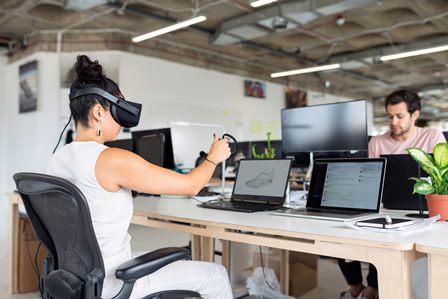3D technology is so commonplace in daily life that we often tend to take it for granted. It is present in our television screens, mobile phones, and printing applications. 3D technology helps change our visual perspective as it adds another dimension to the equation. As such, 3D technology is present in many applications and has completely transformed various industries and sectors. Here is everything you need to know about 3D technology and its applications.
What is 3D Technology?
3D technology is an extensive term, but in essence, it is any technology that displays information in three dimensions. This technology may not always be 3D and instead makes it look as if it is through clever design and perception. 3D technology is seen in many mainstream applications, including 3D cinema, 3D printing, and 3D interior design. For example, you can accurately present minute details in interior design, such as a solar outdoor camera pointing to a porch.
Advantages of 3D Technology
3D technology brings a lot of advantages to the table that can aid architects, industry workers, stakeholders, and the general public. For starters, creating designs in the industry and architecture is quite complex and requires accurate 3D software. 3D technology provides them with the means to make these complicated designs. In addition, it helps designers present their blueprints to stakeholders in an easy-to-understand manner. This can help avoid any complications during the actual building process. 3D printing has helped improve the industry and general public’s cost as it is now quite simple to create complex items quite cheaply. Now that we understand these advantages, we will look at some of these applications in detail.
3D Architectural Technology
3D visualization is perhaps the most crucial element in architecture. It helps architects bring their vision to life with proper dimensions through the use of computer software. Additionally, architects can present their designs to clients who can make decisions with precise information. The 3D design features of this software include adding props like furniture, paintings, carpets, and lighting, which reflects and realistically creates shadows. Any concept design of a structure you have ever seen makes use of this 3D technology. It has made life easier for many architects and is an essential aspect of the sector.
3D Printing Technology
3D printing technology is similar to traditional 2D printing but makes use of much more advanced technology. Generally, 3D printing works by melting a thermoplastic which is then squeezed out by the printed into whatever design is input into it. This is very useful for designers as it allows them to turn their designs into prototypes with the click of a button. It also helps create cheap products with ease that would typically require a more complicated manufacturing process. This technology is also used in the healthcare sector to create prosthetic limbs and replicate organ models. As you can see, 3D printing technology has a lot of potential for various industries.
3D Display Technology
3D display technology has transformed the way television and video games work. There is a lot of depth to the way this technology works, but we will try to simplify it as much as possible. In essence, 3D display technology works by displaying two separate images to each eye. Although you are looking at the same image with both eyes, the glasses help filter through the image and show you two different images. This helps create an optical illusion that gives you a perception of death and makes the images pop out in front of you. This technology was quite popular for a few years, but popularity has died down as most people prefer traditional 2D displays.
In conclusion
3D technology has completely transformed, how so many industries work by providing various advantages that make their lives easy. wordcountjet further suggests that, this technology works by displaying information in three dimensions that can be more helpful than the traditional two dimensions. This technology is primarily seen in architecture, printing, and industrial applications. We hope this article has helped you understand the various aspects of 3D technology.

